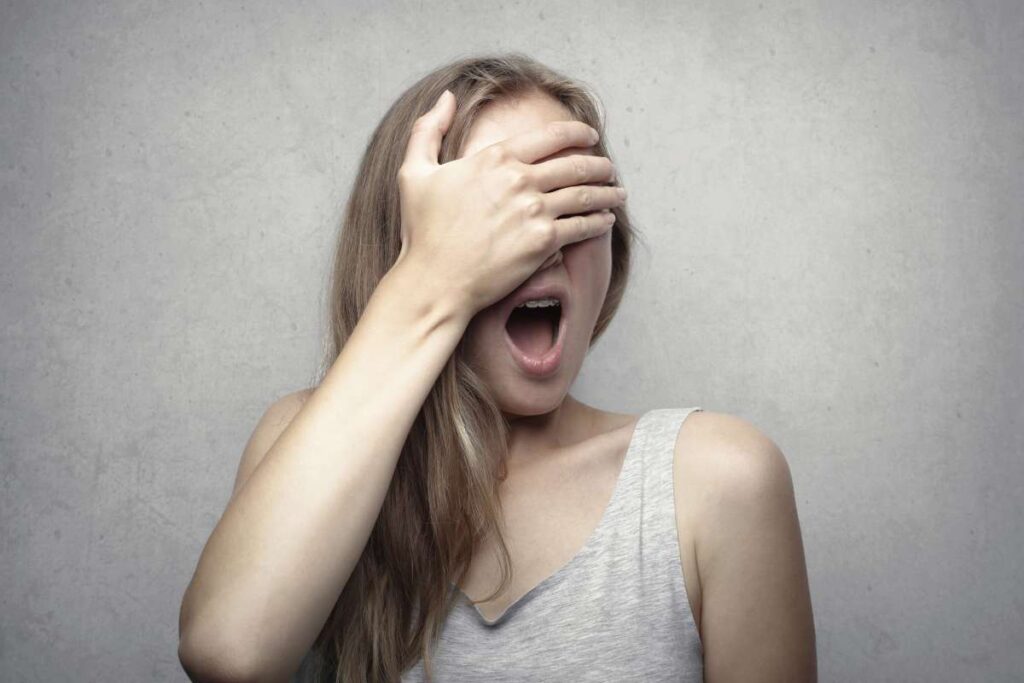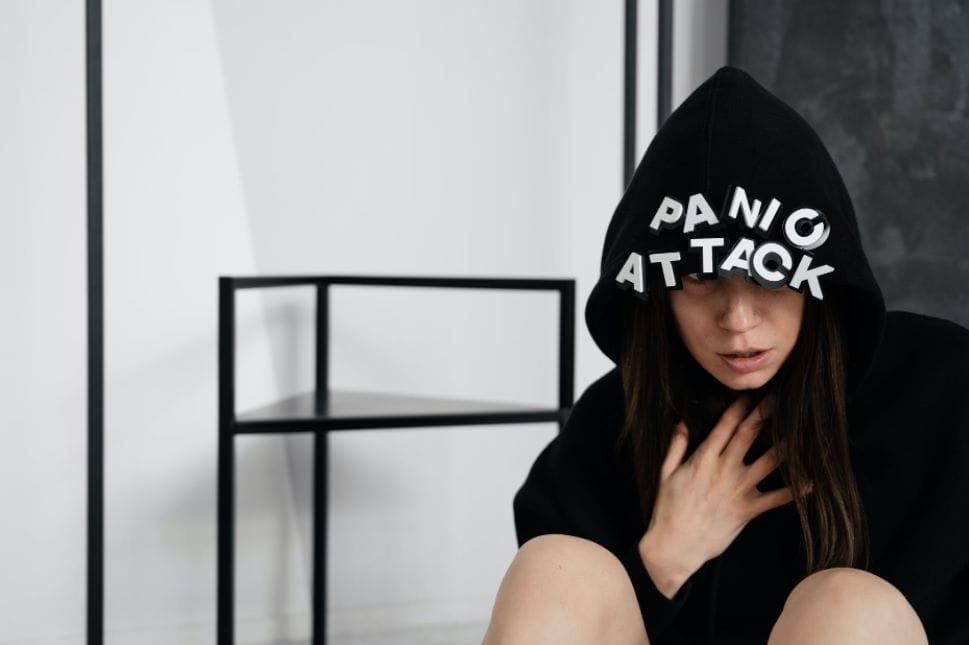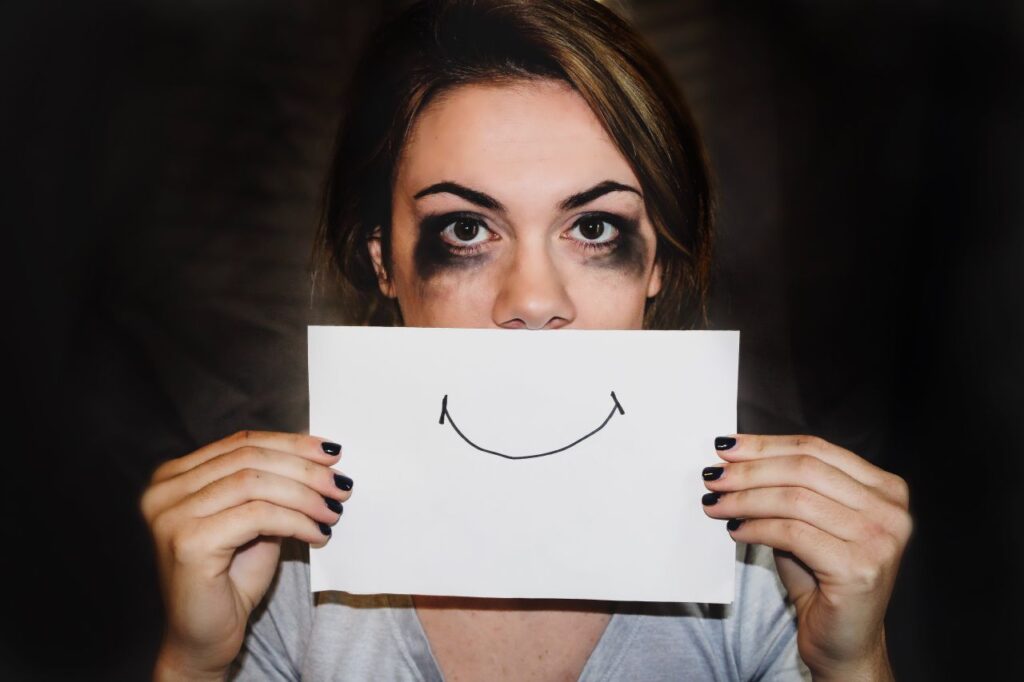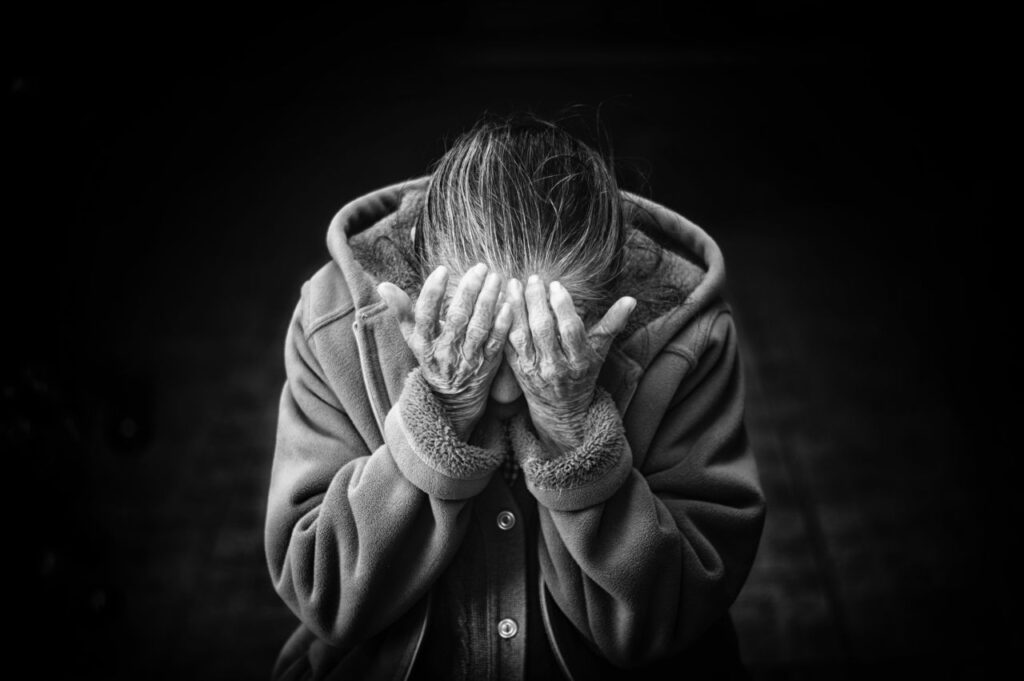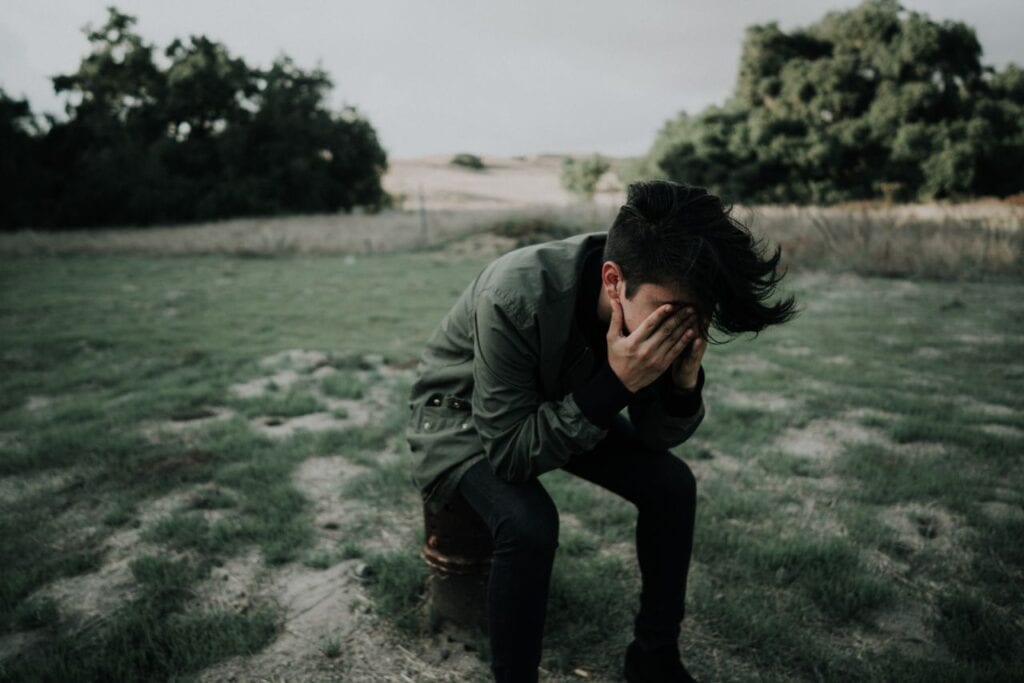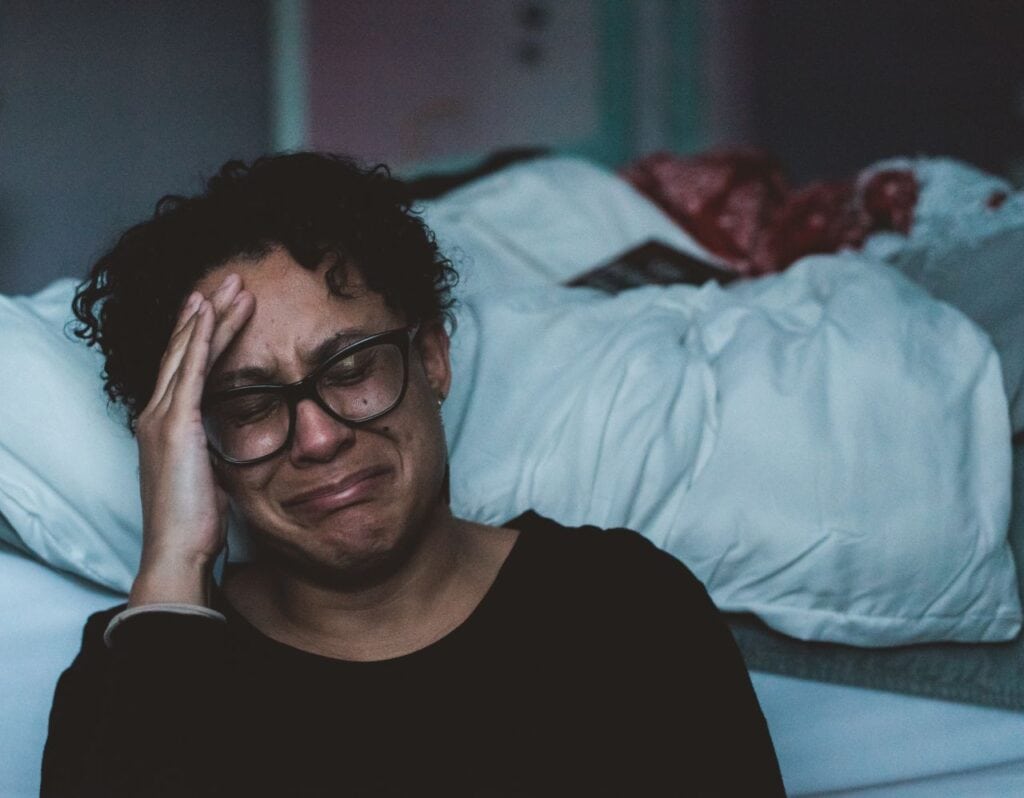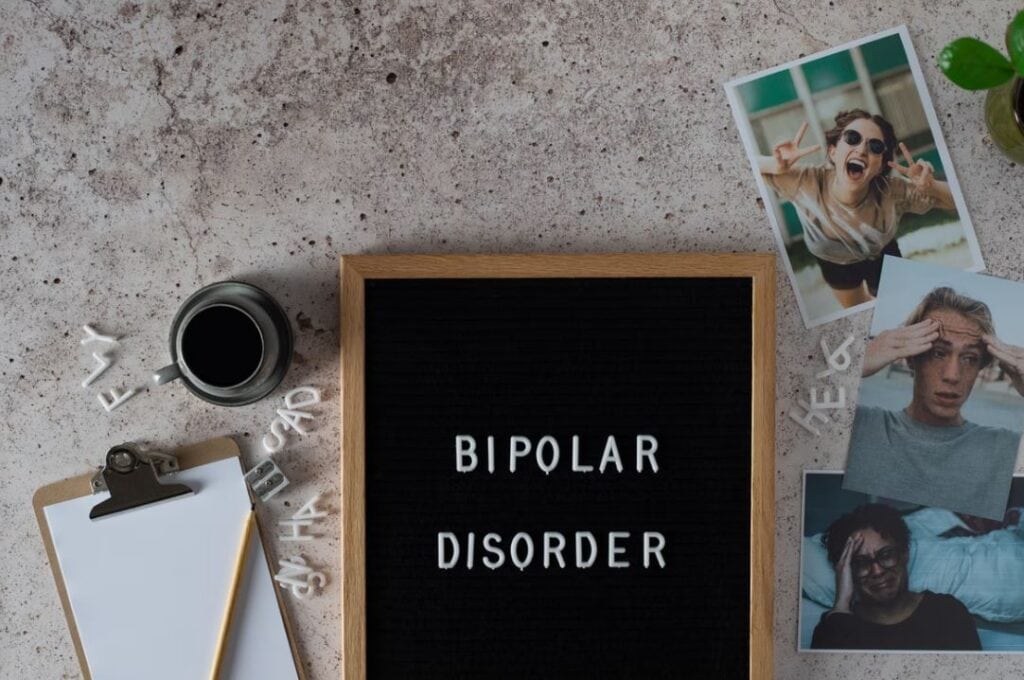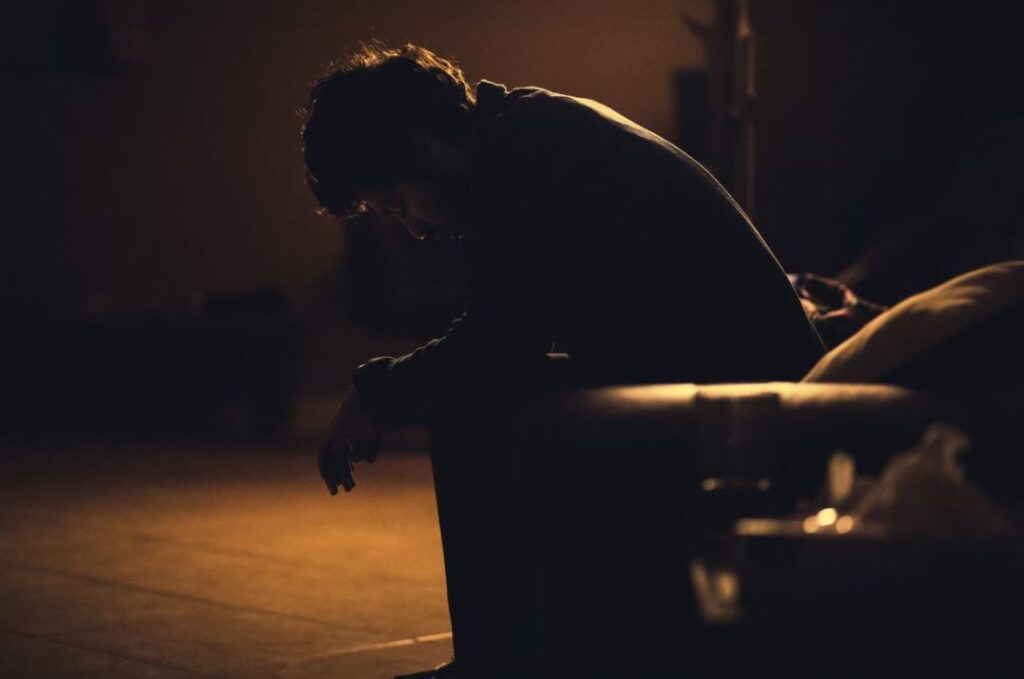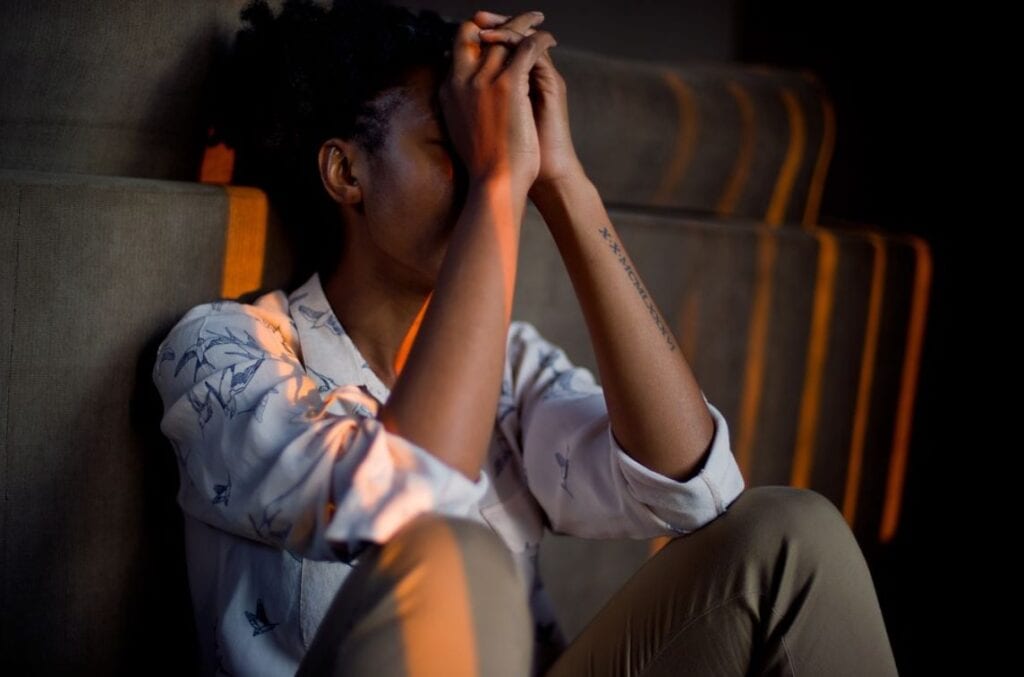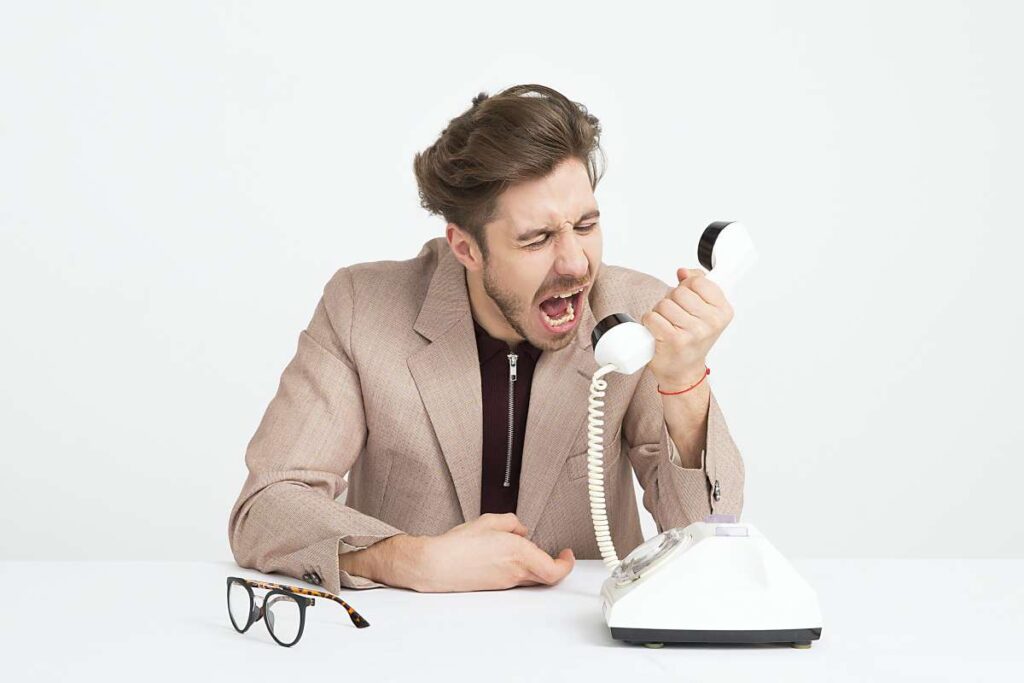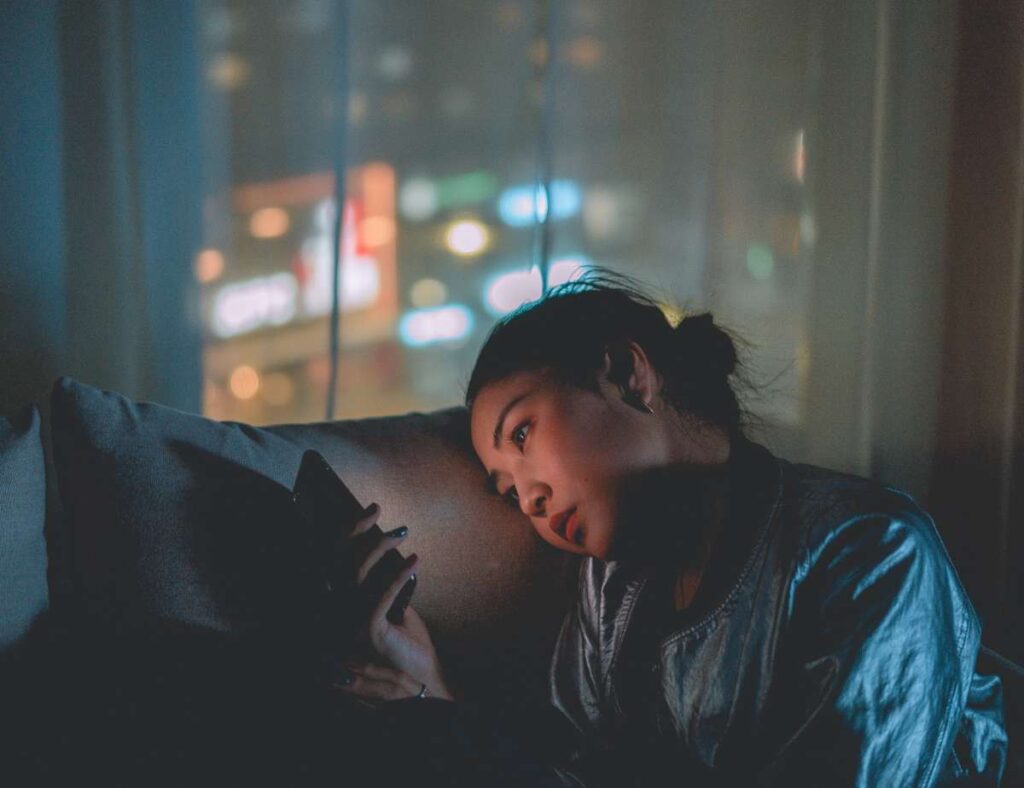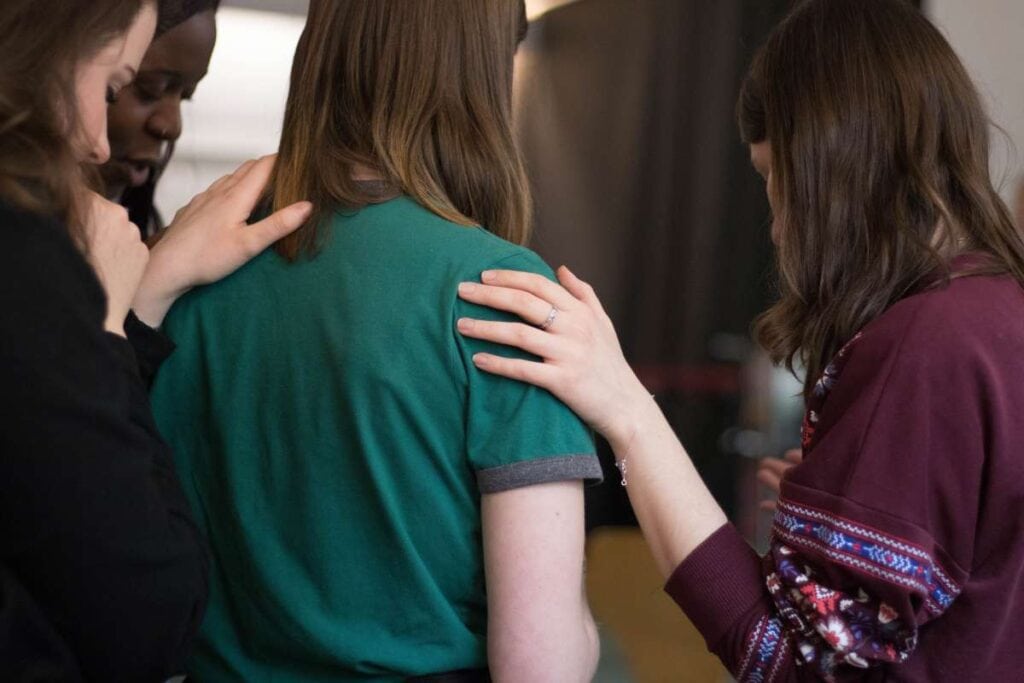Those who are afflicted with trypophobia, or the dread of holes, know firsthand how crippling the affliction can be. I mean, what is it that causes individuals to be fearful in the first place? In this post, we will delve deeper into the topic of trypophobia and explore some of the possible causes for this phobia. On top of that, we'll offer some advice on how to get through your fears. If you think you may be experiencing trypophobia, read on for some helpful advice.
Trypophobia Is The Fear Of Trypsin.
The fear of things like honeycombs and sponges because of their repetitive patterns or clusters of minute holes is called trypophobia. Honeycomb phobia is another name for trypophobia. Trypophobes may find the pattern of holes to be repulsive. However, not everyone is terrified of holes.
Check this list of Rehabilitation Programmes to help you make an informed decision for your treatment.
What Are Some Common Triggers for Trypophobia?
The closer a person is near a holey object or image, the more likely they are to have a negative reaction to it. There are a number of possible causes of trypophobia.
- Blending seeds into loaves of bread and bagels.
- Holes in the cheese, please.
- The insects, in particular the bees.
- The soles of one's shoes.
- Sponges.
How Common Is the Phobia of Trypoproteins?

Numerous studies have found that about one-sixth of the population, or about 17 percent of children and adults, suffer with trypophobia. This medical ailment was not given a name until 2005.
After stories surfaced about how some people reacted negatively to the clusters of microscopic camera lenses on some smartphones, more people learned about trypophobia. And one of the main characters on "American Horror Story: Cult" has a severe case of trypophobia. Some viewers were made uneasy by the show since it featured images that could be called phobic triggers.
What Are The Roots Of Trypophobia?
The specialists don't know what causes trypophobia in some people. One theory is that clusters of holes are read by the brain as warning signs of impending danger. Imagine the pattern of tiny holes on the skin of a deadly snake or the tarantula's eyes. It's conceivable to imagine both of these scenarios. Alternately, the holes may evoke images of skin diseases or rashes.
Another theory suggests that anxiety stems from the brain's need to expend more resources (both oxygen and energy) to process holey patterns. This characteristic has been linked to OCD in a subset of the population (OCD).
Trypophobia is often referred to as "the fear of holes," but it's important to remember that this phobia can also relate to "the fear of bumps" or "the dread of other patterns that are densely packed together." Extreme fear, nausea, itching, sweating, trembling, and even panic attacks have been reported among those who have trigger objects in their environments. A common symptom of this phobia is fear, although the overwhelming emotion is generally described as disgust. Trypophobia is also characterised by an extreme reliance on visual cues. Some people are so repulsed or terrified by the thought of seeing a photograph that they cannot bear to look at it in any form, not even in print or online. Although trypophobia hasn't been extensively studied, there are several hypotheses as to why it occurs.
Causes Of Evolutionary Changes
One of the most frequently accepted explanations for trypophobia is an evolutionary reaction to things that have been historically linked to disease or danger. Signs of skin disease, parasites, or other infectious conditions may manifest as these kinds of holes or lumps. This theory proposes that evolutionary mechanisms may be responsible for the emergence of the dread. For many people with trypophobia, the initial reaction to the object of their dread is one of disgust rather than fear.
A History Of Associating With Dangerous Animals
A second theory suggests that the design of the holes is inspired by the skin and fur of deadly animals. The subconscious associations that people may have with these patterns may inspire fear in them. Scientific evidence backs up this hypothesis. In a study from 2013, researchers evaluated the responses of people with and without trypophobia to a variety of stimuli. Honeycombs are commonly connected with trypophobia, however when shown to people who do not suffer from the phobia, their thoughts often turn to sweeter topics, such as honey or bees. Those who suffer from trypophobia may subconsciously associate honeycomb patterns with dangerous animals like rattlesnakes, according to the study's authors. Even if they aren't able to put their finger on it, the fact that they feel disgust or fear is likely tied to this unconscious connection.
Relationships With Infectious Bacteria And Viruses
In 2017, researchers looked into whether or whether people connected a pattern of holes with a skin-transmissible disease. Itching and crawling sensations were also reported by study participants when exposed to similar patterns. Reacting with revulsion or fear to possible threats is an example of an adaptive evolutionary response. These feelings are crucial in helping us avoid potentially dangerous situations. Trypophobia, on the other hand, is thought to be an excessive and overgeneralized version of this adaptive response. Since trypophobia is more prevalent, this is what they assume.
An Answer That Takes Into Account The Appearance
Evidence from a number of studies suggests that the visual features of the patterns themselves may be to responsible for the anxiety some people feel while viewing them. Psychological Reports presented research showing that people's aversion to trypophobic patterns isn't so much about the dangers posed by the animals shown as it is about the patterns themselves. The purpose of the research was to find out if people feel uneasy when exposed to trypophobic patterns. These results raise the question of whether or not trypophobia constitutes a true phobia, or merely a normal reaction to unusual visual cues.
How Does One Come To Fear Trypoproteins?
Trypophobia is more prevalent among women than men. Your risk of experiencing trypophobia increases if you have any of the following:
- Anxiety.
- Depression.
- Obsessive-compulsive disorder.
What Are The Signs And Symptoms Of Trypophobia?
Trypophobia can lead to the following:
- Chills.
- A rapid rate of both breathing and heartbeat.
- Pale skin.
- Sweating in copious amounts (hyperhidrosis).
- Nausea.
- He is shaky or trembling all over.
How Is The Fear Of Trypoproteins Identified?
The American Psychiatric Association (APA) has decided not to add trypophobia as a diagnosable disorder in the most recent edition of the Diagnostic and Statistical Manual of Mental Disorders (DSM) (DSM). The fact that the sickness is usually just irritating rather than life-threatening may be a contributing factor. Due to widespread disagreement about whether or not this qualifies as a disorder, no universally accepted diagnostic criteria have been established. However, one can be tested for their fear of trypophan.
Are you looking for the best rehab centre? Then Refocus Rehab Melbourne is the answer.
If you're wondering whether or not you suffer from trypophobia, you might find the online test helpful (it's given for research purposes only). The quiz will not record any information that might be used to identify you. Your involvement will be kept anonymous.
If the ratio is greater than 2, trypophobia may be present. Talking to a mental health professional, like a psychologist, may be useful if the test results and your negative reactions to holey patterns continue to disturb you.
Because trypophobia is not recognised as a mental disorder in the DSM-5 published by the American Psychiatric Association, the condition cannot be clinically diagnosed.
Trypophobia isn't officially recognised as a phobia by the majority of mental health professionals; nevertheless, if the symptoms persist over time, are very severe, and cause a great deal of emotional distress and impairment in everyday functioning, then the condition may be diagnosed.
A mental health professional may identify a specific phobia after considering the patient's symptoms and reviewing their medical, social, and family histories. This method is analogous to that used to identify other other phobias. To rule out other conditions that may be affecting the individual's mental health or that result in symptoms that are analogous to those of trypophobia, it may be necessary to perform a physical examination, various laboratory tests (such as blood tests or urine samples), and brain imaging (e.g., psychiatric disorders, cancers affecting the brain, recent trauma). Trypophobics are more likely to experience co-occurring mental health conditions, such as depression, ocd, or substance abuse, than the general population. In order to effectively manage the associated issues, it is crucial to first have a thorough evaluation from a mental health professional.
Is There A Treatment For Trypophobia?
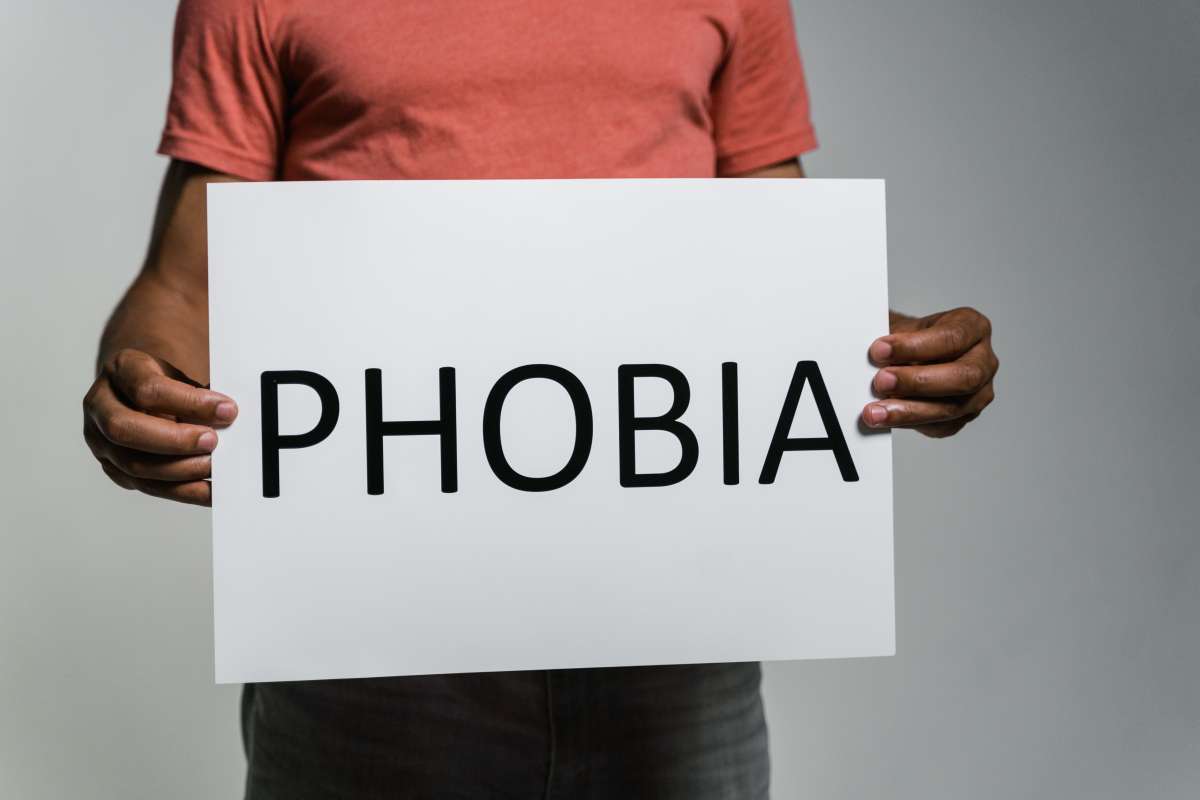
If your trypophobia prevents you from engaging in certain activities or from living life to the fullest, exposure therapy is an option to consider. You can overcome your trypophobia by participating in exposure treatment, in which you are gradually exposed to situations that bring on your anxiety. Talk therapy, or psychotherapy, is beneficial in helping as many as nine out of ten people overcome their specific phobias. During exposure therapy, your doctor or healthcare professional will conduct the following:
- It instructs you on several methods of breathing and relaxation that can be used in preparation for and during exposures.
- To help you regulate your response, it shows clusters of holes in static images or looping films.
- Gradually increase your exposure time until you can comfortably hold a sponge, whose surface is covered with a pattern of holes.
Cognitive-behavioral therapy is an additional option (CBT). With the help of this treatment, you can change your outlook on and response to the triggers of your trypophobia.
People with specific phobias rarely find relief from anti-anxiety medications. Conversely, your doctor may prescribe anxiety medication as a stopgap measure if you'll be exposed to an allergen-provoking setting.
CBT Stands For Cognitive-Behavioral Therapy (CBT)
CBT, or cognitive behavioural therapy, is a method of treating trypophobia in which the patient and therapist work together to alter the patient's thoughts and actions. It may entail, for instance, a discussion about unrealistic thinking, the adoption of more realistic thought patterns, and the adoption of more appropriate behavioural patterns. Gradual exposure to the feared object or event is one technique used in cognitive behavioural therapy (CBT) to assist patients become less reactive to the feared item or situation.
One of the causes of phobia symptoms is the phobic's belief that the phobic object is inherently dangerous. Therefore, when people encounter the scary object, they immediately think negatively about it.
Exposure therapy is a type of CBT that involves gradually exposing the patient to the feared stimulus in the hopes that the patient's anxiety and fear will diminish with time. This procedure is usually carried out in a very gradual fashion. Some people find it helpful to imagine the item of their phobia, then look at pictures of it, then get physically closer to it, and then attempt to touch it.
If you or someone you know is having symptoms of trypophobia, try closing your eyes and picturing a honeycomb or seed pod. They will continue to work on this until they notice an improvement in symptoms. When he has progressed to the point where he can merely think about the allergen without experiencing any adverse effects, he will move on to the next stage, which often involves looking at an image of an object that would normally induce symptoms.
This blog post will help you make an informed decision about Rehab Treatment Melbourne fees for different treatments.
Relaxation Techniques
Relaxation techniques can help reduce negative emotions including disgust, dread, and anxiety. Progressive muscular relaxation, deep breathing, and visualising an ideal outcome are all techniques that could prove helpful.
Visualization is the process of mentally enacting peaceful scenarios. Someone with trypophobia, for example, can imagine a beautiful scenario anytime they come across anything that is full of tiny holes, like a sunset or a field of flowers. Sometimes, all you need to do to deal with your sentiments is take a break from thinking about them. If, for some reason, you experience a reaction typical of trypophobia, one strategy is to divert your attention elsewhere until the fear subsides.
Medications
If a client presents with symptoms of sadness or anxiety, a doctor may prescribe an antidepressant or antianxiety medicine. This may include drugs like beta-blockers, benzodiazepines, and selective serotonin reuptake inhibitors (SSRIs). However, they are usually used in conjunction with another treatment modality, such as cognitive behavioural therapy or psychotherapy.
There may not be a specific treatment for trypophobia, but many of the same approaches that help people with other phobias can help those with trypophobia as well. The severity of the phobia and the patient's medical history are two factors that help decide the treatment strategy used. Treatment strategies may include lifestyle changes, counselling, and even medication.
Lifestyle changes may include the introduction of relaxation methods like guided imagery, deep breathing exercises, and the practise of mindfulness, meditation, or yoga. People who drink less coffee and get more exercise may see a decrease in the intensity of their fear emotions. General conversation therapy with a mental health professional or joining a support group can be helpful for some people who are coping with a phobia. These alterations to one's way of life aid in the alleviation of trypophobia by fostering healthy coping mechanisms and a general state of well-being.
Exposure therapy (ET) and cognitive behavioural therapy are the two most used forms of psychotherapy (CBT). Licensed mental health practitioners lead both types of therapy. Trypophobia can be treated with exposure therapy (ET), which entails exposing sufferers to situations they're afraid of. This helps individuals develop cognitive flexibility, which in turn improves their ability to manage anxiety in the face of triggers. However, cognitive behavioural treatment (CBT) focuses on changing how people think about and react to situations that could bring on their phobia of holes.
A medical professional's recommendation for medicine to alleviate trypophobia symptoms will be situationally and treatment-specific. Benzodiazepines (such lorazepam or clonazepam) and other anti-anxiety medicines may be useful in the treatment or prevention of anxiety and panic disorders. The doctor may also suggest taking a beta-blocker like propranolol to assist reduce the heart rate, sweating, and dizziness that accompany fear. These drugs can be purchased without a prescription at any local drug store. Sedatives are a class of drugs that help people unwind and keep their cool under pressure.
What Are Some Of The Potential Complications Associated With Trypophobia?
Those who suffer from severe trypophobia may find it difficult to maintain employment, go to school, or make friends. Possible side effects include:
- Depression.
- tension and anger levels rising.
- Trouble falling or staying asleep.
- Experiments in Panic
- Methods for Avoiding Trypanophobia
If you're experiencing acute symptoms of trypophobia right now, you may find that regular use of relaxation techniques reduces both the duration of your current symptoms and their intensity in the future. You may reduce your anxiety and fear by training your body to respond to stress with a relaxation response, such as slowing your heart rate when you take a deep breath. A upward-pointing right arrow Simple techniques like box breathing have been proved to be helpful. an upwards-pointing, right-pointing arrow The method consists of the following steps:
- For a count of four, hold your breath as you exhale slowly through your nose.
- Inhale fully through your nose as you count to four.
- Please exhale slowly and steadily through your nose for a count of four.
- You can keep this up for anything from one to five minutes.
Frequently Asked Questions
Researchers say that hole-like patterns have a type of visual energy that can cause an unpleasant reaction. Other researchers believe that fear comes from social anxiety. For example, circles look slightly like clusters of eyes or faces staring at you, which can be upsetting if you get nervous in social settings.
No, but it could be an evolutionary response to skin diseases. Many serious skin diseases resemble a cluster of shapes. Some say trypophobia is an excessive reaction to things that resemble serious skin diseases.
Pitted keratolysis is a skin disorder that's caused by bacteria. It creates crater-like pits or small holes on the top layer of your skin and usually affects the soles of your feet but can also develop on the palms of your hands. It's more common in people who: Often go barefoot and live in tropical areas.
There is limited research into trypophobia, but one study might help explain why that meme (debunked by Snopes) spread so far and wide – it found that trypophobia is more powerful when holes are shown on the skin on non-animal objects like rocks. Likewise, the disgust is greater when holes are superimposed on faces.
The exact cause of trypophobia is unknown, as research in this area is limited. However, various triggers of trypophobia have been identified, such as honeycombs, bubble wrap, or fruit seeds. In addition, certain patterns, bumps, patterned animals, and imagery may trigger trypophobic reactions.
What Do You Consider To Be The Most Vital Information Regarding Your Trypophobia?
Trypophobia, a type of particular phobia, is characterised by a morbid fear of apertures. Those who suffer from trypophobia may experience feelings of revulsion or fear when exposed to stimuli that show concentrated patterns of irregularly shaped holes. Treatment choices may include behavioural adjustments, psychotherapy with a trained mental health professional or support group involvement, exposure therapy (ET), cognitive behavioural therapy (CBT), and, in very exceptional cases, medication. Getting over a fear of trypophobe requires the affected person to be patient, persistent, and determined.
Conclusion
Although the concept of trypophobia has gained popularity online, psychologists' views on whether or not it is a real fear remain varied. As of now, it is not considered a mental condition by the American Psychiatric Association's Diagnostic and Statistical Manual of Mental Disorders (DSM) (DSM-5). More study is required to ascertain the disease's origins, the disease's prevalence, and the many treatment options now available. Fortunately, there are many effective treatments available for this illness, and the vast majority of people who suffer from it are able to find relief from their symptoms through psychotherapy, medicine, or even self-help.
Content Summary
- Those who are afflicted with trypophobia, or the dread of holes, know firsthand how crippling the affliction can be.
- In this post, we will delve deeper into the topic of trypophobia and explore some of the possible causes for this phobia.
- On top of that, we'll offer some advice on how to get through your fears.
- The fear of things like honeycombs and sponges because of their repetitive patterns or clusters of minute holes is called trypophobia.
- Honeycomb phobia is another name for trypophobia.
- However, not everyone is terrified of holes.
- Check this list of Rehabilitation Programmes to help you make an informed decision for your treatment.
- There are a number of possible causes of trypophobia.
- How Common Is the Phobia of Trypoproteins?Numerous studies have found that about one-sixth of the population, or about 17 percent of children and adults, suffer with trypophobia.
- This medical ailment was not given a name until 2005.After stories surfaced about how some people reacted negatively to the clusters of microscopic camera lenses on some smartphones, more people learned about trypophobia.
- And one of the main characters on "American Horror Story: Cult" has a severe case of trypophobia.
- Another theory suggests that anxiety stems from the brain's need to expend more resources (both oxygen and energy) to process holey patterns.
- This characteristic has been linked to OCD in a subset of the population (OCD).Trypophobia is often referred to as "the fear of holes," but it's important to remember that this phobia can also relate to "the fear of bumps" or "the dread of other patterns that are densely packed together."
- Trypophobia is also characterised by an extreme reliance on visual cues.
- Causes Of Evolutionary ChangesOne of the most frequently accepted explanations for trypophobia is an evolutionary reaction to things that have been historically linked to disease or danger.
- This theory proposes that evolutionary mechanisms may be responsible for the emergence of the dread.
- For many people with trypophobia, the initial reaction to the object of their dread is one of disgust rather than fear.
- The subconscious associations that people may have with these patterns may inspire fear in them.
- Those who suffer from trypophobia may subconsciously associate honeycomb patterns with dangerous animals like rattlesnakes, according to the study's authors.
- In 2017, researchers looked into whether or whether people connected a pattern of holes with a skin-transmissible disease.
- Reacting with revulsion or fear to possible threats is an example of an adaptive evolutionary response.
- Trypophobia, on the other hand, is thought to be an excessive and overgeneralized version of this adaptive response.
- An Answer That Takes Into Account The AppearanceEvidence from a number of studies suggests that the visual features of the patterns themselves may be to responsible for the anxiety some people feel while viewing them.
- Psychological Reports presented research showing that people's aversion to trypophobic patterns isn't so much about the dangers posed by the animals shown as it is about the patterns themselves.
- The purpose of the research was to find out if people feel uneasy when exposed to trypophobic patterns.
- These results raise the question of whether or not trypophobia constitutes a true phobia, or merely a normal reaction to unusual visual cues.
- How Does One Come To Fear Trypoproteins?Trypophobia is more prevalent among women than men.
- Your risk of experiencing trypophobia increases if you have any of the following:Anxiety.
- How Is The Fear Of Trypoproteins Identified?The American Psychiatric Association (APA) has decided not to add trypophobia as a diagnosable disorder in the most recent edition of the Diagnostic and Statistical Manual of Mental Disorders (DSM) (DSM).
- Due to widespread disagreement about whether or not this qualifies as a disorder, no universally accepted diagnostic criteria have been established.
- If the ratio is greater than 2, trypophobia may be present.
- Talking to a mental health professional, like a psychologist, may be useful if the test results and your negative reactions to holey patterns continue to disturb you.
- Because trypophobia is not recognised as a mental disorder in the DSM-5 published by the American Psychiatric Association, the condition cannot be clinically diagnosed.
- Trypophobia isn't officially recognised as a phobia by the majority of mental health professionals; nevertheless, if the symptoms persist over time, are very severe, and cause a great deal of emotional distress and impairment in everyday functioning, then the condition may be diagnosed.
- A mental health professional may identify a specific phobia after considering the patient's symptoms and reviewing their medical, social, and family histories.
- In order to effectively manage the associated issues, it is crucial to first have a thorough evaluation from a mental health professional.
- Is There A Treatment For Trypophobia?If your trypophobia prevents you from engaging in certain activities or from living life to the fullest, exposure therapy is an option to consider.
- You can overcome your trypophobia by participating in exposure treatment, in which you are gradually exposed to situations that bring on your anxiety.
- Gradually increase your exposure time until you can comfortably hold a sponge, whose surface is covered with a pattern of holes.
- People with specific phobias rarely find relief from anti-anxiety medications.
- Conversely, your doctor may prescribe anxiety medication as a stopgap measure if you'll be exposed to an allergen-provoking setting.
- CBT Stands For Cognitive-Behavioral Therapy (CBT)CBT, or cognitive behavioural therapy, is a method of treating trypophobia in which the patient and therapist work together to alter the patient's thoughts and actions.
- Gradual exposure to the feared object or event is one technique used in cognitive behavioural therapy (CBT) to assist patients become less reactive to the feared item or situation.
- Exposure therapy is a type of CBT that involves gradually exposing the patient to the feared stimulus in the hopes that the patient's anxiety and fear will diminish with time.
- This procedure is usually carried out in a very gradual fashion.
- If you or someone you know is having symptoms of trypophobia, try closing your eyes and picturing a honeycomb or seed pod.
- This blog post will help you make an informed decision about Rehab Treatment Melbourne fees for different treatments.
- Relaxation TechniquesRelaxation techniques can help reduce negative emotions including disgust, dread, and anxiety.
- Sometimes, all you need to do to deal with your sentiments is take a break from thinking about them.
- However, they are usually used in conjunction with another treatment modality, such as cognitive behavioural therapy or psychotherapy.
- There may not be a specific treatment for trypophobia, but many of the same approaches that help people with other phobias can help those with trypophobia as well.
- The severity of the phobia and the patient's medical history are two factors that help decide the treatment strategy used.
- Treatment strategies may include lifestyle changes, counselling, and even medication.
- General conversation therapy with a mental health professional or joining a support group can be helpful for some people who are coping with a phobia.
- These alterations to one's way of life aid in the alleviation of trypophobia by fostering healthy coping mechanisms and a general state of well-being.
- Exposure therapy (ET) and cognitive behavioural therapy are the two most used forms of psychotherapy (CBT).
- A medical professional's recommendation for medicine to alleviate trypophobia symptoms will be situationally and treatment-specific.
- Benzodiazepines (such lorazepam or clonazepam) and other anti-anxiety medicines may be useful in the treatment or prevention of anxiety and panic disorders.
- These drugs can be purchased without a prescription at any local drug store.
- Experiments in PanicMethods for Avoiding TrypanophobiaIf you're experiencing acute symptoms of trypophobia right now, you may find that regular use of relaxation techniques reduces both the duration of your current symptoms and their intensity in the future.
- You may reduce your anxiety and fear by training your body to respond to stress with a relaxation response, such as slowing your heart rate when you take a deep breath.
- A upward-pointing right arrow Simple techniques like box breathing have been proved to be helpful.
